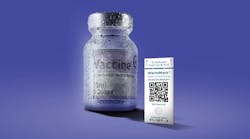[pullquote]The U.S. prescription drug supply chain is among the safest in the world. Yet, it continues to be under threat from criminal organizations that have found ways to breach the safeguards of the U.S. distribution system and introduce counterfeit, diverted, stolen, and otherwise substandard drugs into the nation’s supply chain. This puts patient health at risk.
The Drug Supply Chain Security Act (DSCSA), enacted in 2013, provides additional safeguards to further ensure the security of our nation’s drug supply and prevent these breaches. The law improves FDA’s ability to protect patients from exposure to drugs that are potentially harmful. In the nearly four years since DSCSA passed, the supply chain has implemented many of these safeguards in a step-wise approach—starting with exchange of lot level product tracing information, the establishment of verification systems and processes, and soon, product serialization. These steps are building blocks to the fully electronic, interoperable, package level tracing to enhance the drug distribution system in 2023, and enable trading partners to trace certain drugs as they move within the U.S. drug supply chain.
FDA and trading partners share a common goal, which is to keep good drugs moving through the supply chain while stopping bad drug in their tracks. FDA envisions that this new electronic system should be designed to:
- Provide increased public health benefits by creating a tighter, closed system that will prevent the introduction of illegitimate products, better detect suspect products, and enable us and stakeholders to rapidly respond when such products are found in the supply chain. This system should facilitate prompt removal of problem products from the supply chain and help manage drug shortages and outbreaks by automating information to better manage inventory across the U.S.;
- Ensure diligence and vigilance among all trading partners that incorporates risk models and predictive controls to facilitate rapid identification of supply chain breaches and adulterated product;
- Support FDA’s compliance and enforcement efforts by providing rapid access to information about where and how a product has moved through the supply chain;
- Be adaptable and flexible to incorporate information technology advances, without significant disruption to drug distribution or added costs, as well as support the privacy and security needs across diverse sectors of the marketplace and integrate information from businesses of all sizes; and
- In the future, consider linkages with the U.S. health care system to improve patient care and potentially rein in prescription drug costs through more accurate reimbursement and decreased health care fraud.
Additionally, as borders become less defined in the global marketplace, it is important that illegitimate drug product be easily identifiable and accountable, no matter where it may be around the world. Although there may not be one global system for tracing products, it is important that global systems converge to capitalize on regulatory and stakeholder oversight and controls in the global marketplace.
We are currently working with stakeholders to build a clear and practical path forward on what the system will do, what the regulatory and legal requirements are, how to operationalize the system, and how to ensure that it is agile enough to adapt to future changes in technology and drug distribution. We must be forward-thinking and design a system that is not based on the lowest hanging fruit, but one that is built to truly safeguard the safety and security of our nation’s drug supply to protect patients from illegitimate drug products.
Much work needs to be done before the enhanced system goes live in 2023, but the efforts will be worth it to further ensure the safety and security of our nation’s drug supply. See the FDA’s DSCSA webpage for more information.







